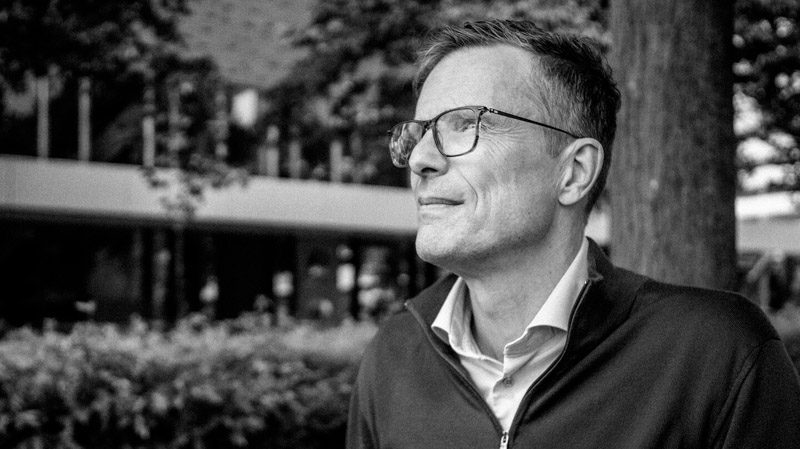
Energy & Infrastructure Team Manager at the Port of Rotterdam
“Getting the hydrogen flow going; that’s my goal.”
Mark Stoelinga, currently Energy and Infrastructure Manager at the Port of Rotterdam, previously worked in England, India and China. His international experience has shown him that developments can sometimes be slow however also can progress rapidly. This is why he wants to set concrete goals.
“I want to see the entire supply chain in action; from production in a distant country to arrival in Rotterdam and beyond,” says Mark Stoelinga, who joined the Port of Rotterdam Authority three years ago. As a business manager, he is focussing on setting up the hydrogen network in the port. For the past year, he has been leading the Energy & Infrastructure Team. He and his team are dedicated to developing new energy flows and the necessary infrastructure, including the introduction of hydrogen and pipelines. “An outsider might think that hydrogen will solve all our problems. That’s true, but people underestimate how much time it takes. The scale of operations in the port is enormous. The projects required are vast. As a comparison, the transition to sustainable electricity was also challenging at first, but it is now often cheaper than fossil fuels. Thanks to supportive government policies and the boldness of businesses, this transition has taken off. But patience is essential.”
Minimizing the impact of climate change
I wanted to be at the forefront of the energy transition, in other words, to be proactive rather than reactive. So I decided to join Air Liquide before making the move to the Port of Rotterdam Authority. I want to give something back to society. That’s what I want to focus on throughout my career. What can we do together to minimize the impact of climate change? There are no easy answers, but I want to play my part.
Net-zero emissions in Europe by 2050
“A clear goal is to achieve net-zero emissions in Europe by 2050. I envision a cleaner, better and healthier world,” says Stoelinga. “The current rise in temperatures is alarming, but I remain optimistic. It’s important to take real action; you have to start somewhere. One example is the hydrogen pipeline from the Port of Rotterdam to Chemelot and Germany. That’s why it’s crucial that the Delta Rhine Corridor doesn’t face further delays. We are an important energy port for Germany, a role we want to maintain, but then for green energy. That means import flows must be established, and more electrolysers need to be built worldwide.
There’s a lot to be done, but as I’ve seen during my years abroad, progress can happen quickly as long as there’s enough support!” Mark Stoelinga adds: “We’re making great strides! In the engine rooms, for example, a lot is changing. Ships and companies are transitioning to new fuels. And everything running through pipelines today will be sustainable in 25 to 30 years. Which is fantastic! Factories will remain, and chimneys will still be there, but when powered by hydrogen, they’ll only emit water vapour. And, of course, we’ll also be permanently storing captured CO₂ with the Porthos project!” *
* Porthos is a project that captures CO₂ emissions from industry in the Port of Rotterdam, transports it, and stores it in empty gas fields beneath the North Sea. Around 30 kilometres of pipeline will be installed underground on land, with an additional 20 kilometres extending offshore. The Porthos system is expected to be operational by 2026.
Source: Port of Rotterdam.
Black and white photo: Marc Nolte

